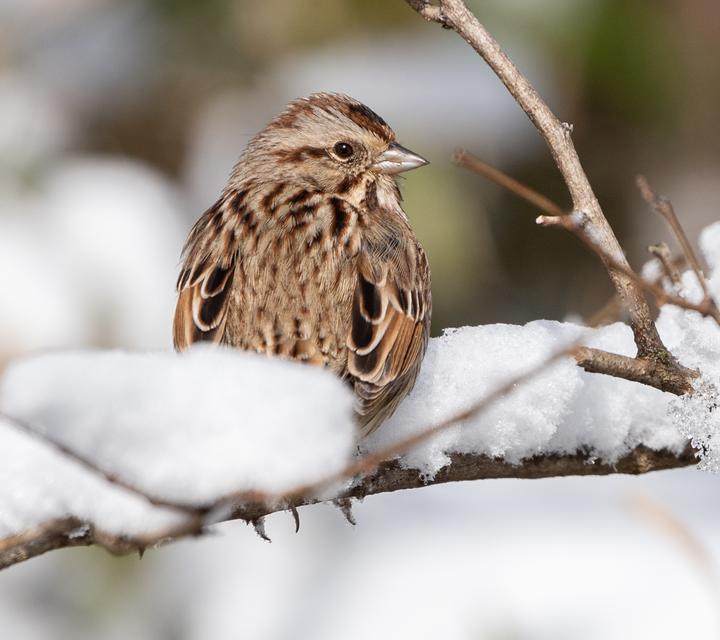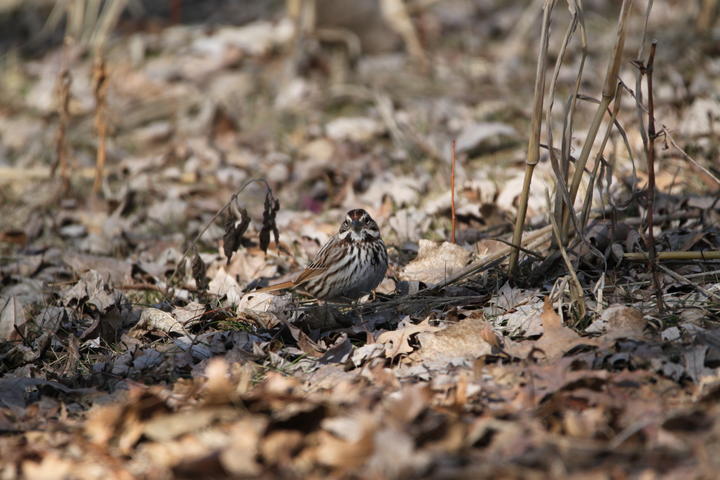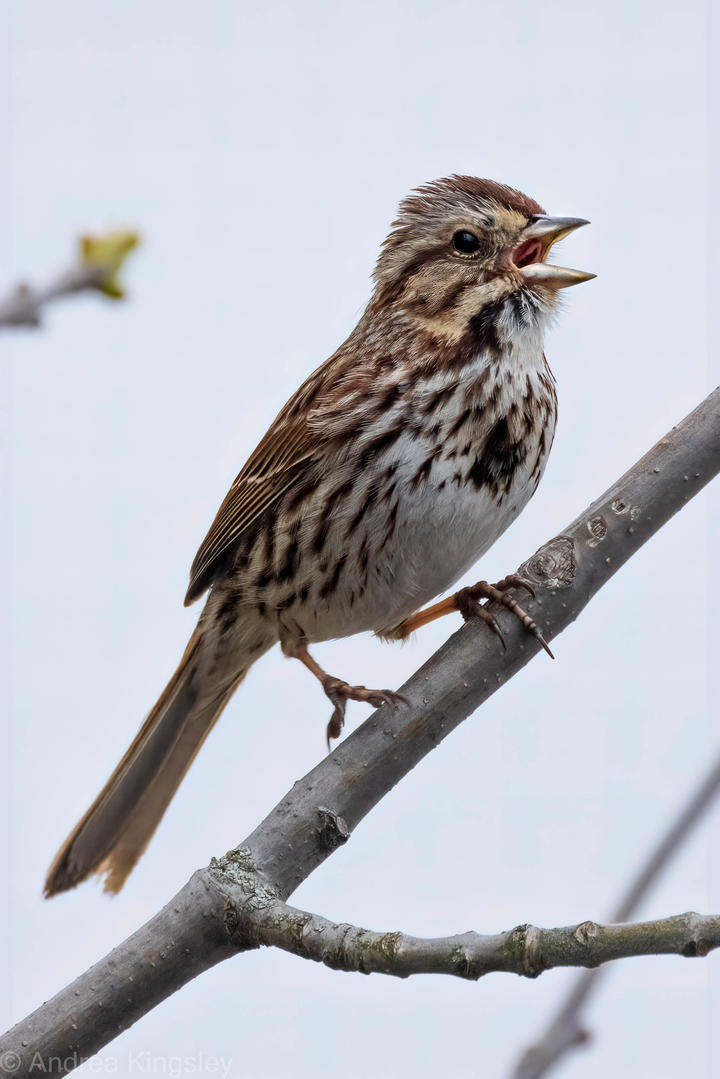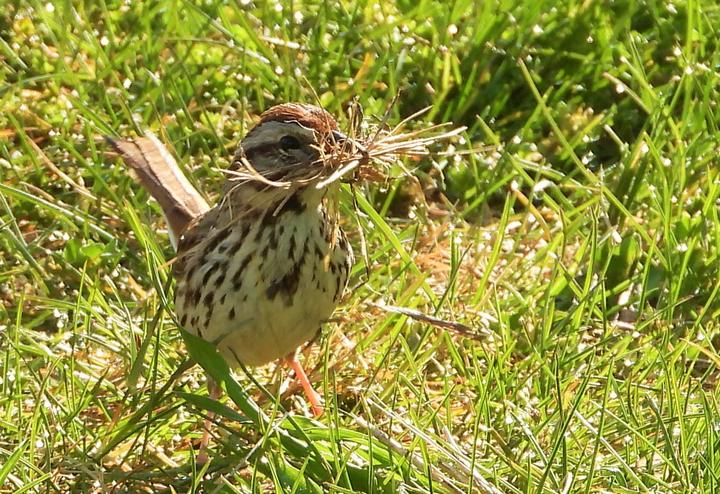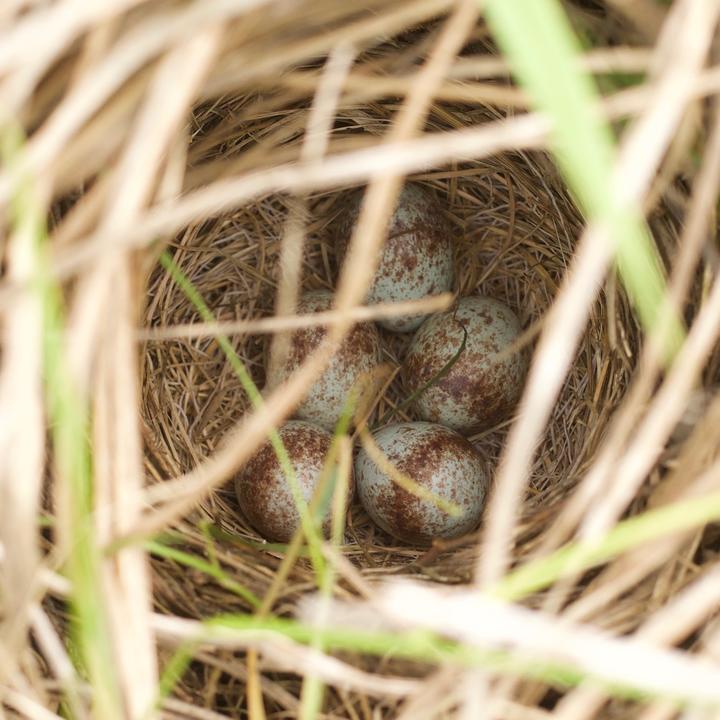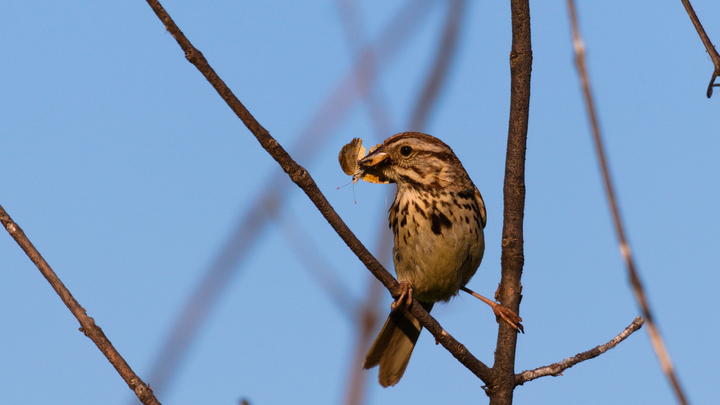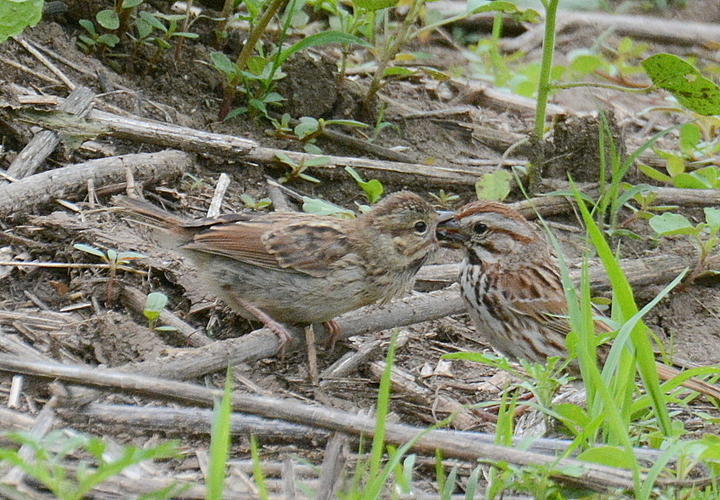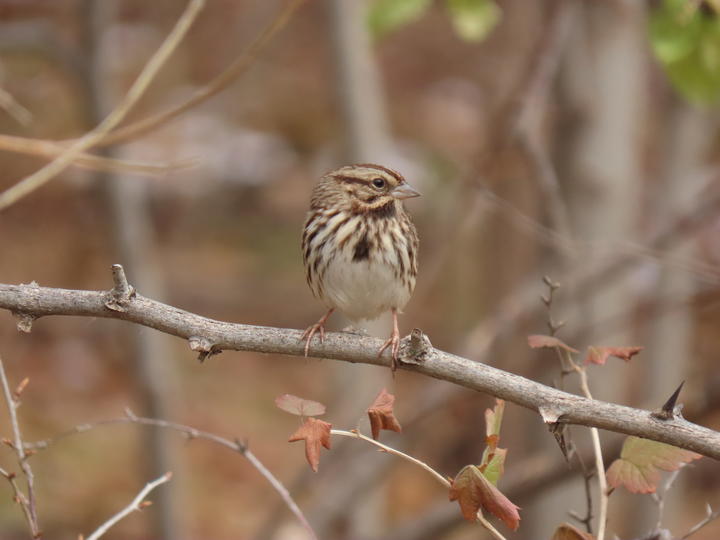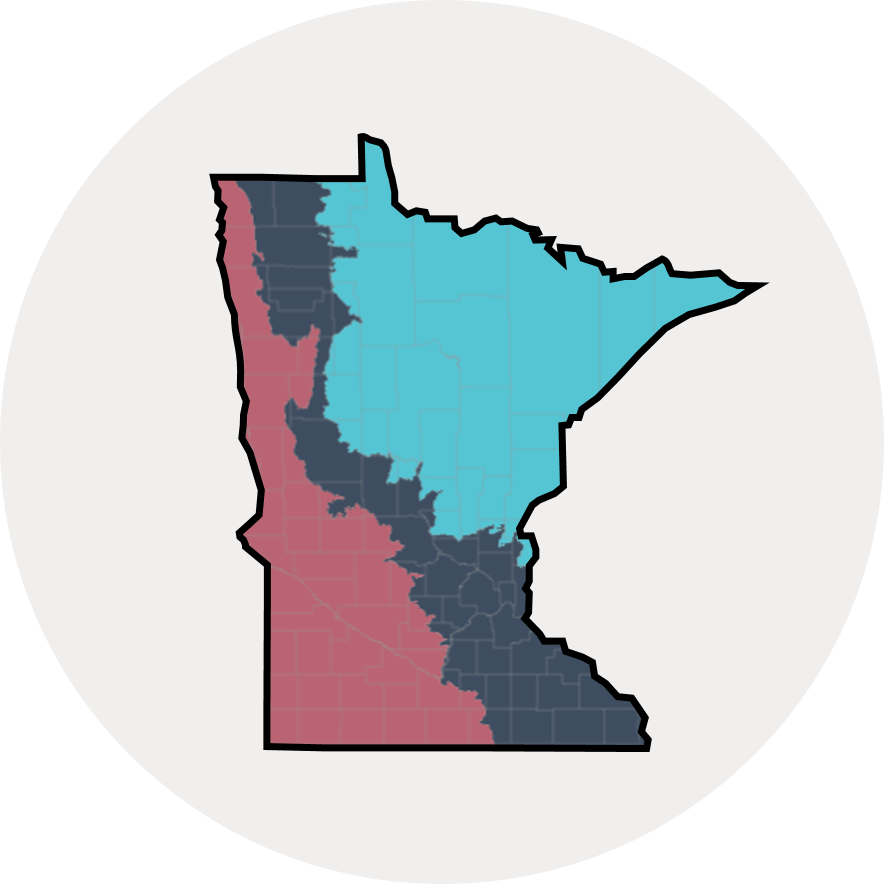More names for this bird
Dakota: Wakasaŋsaŋ (sparrow)
The Dakota and Anishinaabe were among the earliest people to name Minnesota’s plants and animals, as well as to understand them in relation to Minnesota’s climate and seasons. Those original names are still in use, and several are included on the Season Watch website. However, complete translations were not available.
Latin (or scientific name): Melospiza melodia
The scientific community has a convention of assigning agreed-upon Latin names to every kind of organism. Using scientific names helps people communicate confidently about the same organism and organize lifeforms based on how closely related they are.
Page contents
About the song sparrow
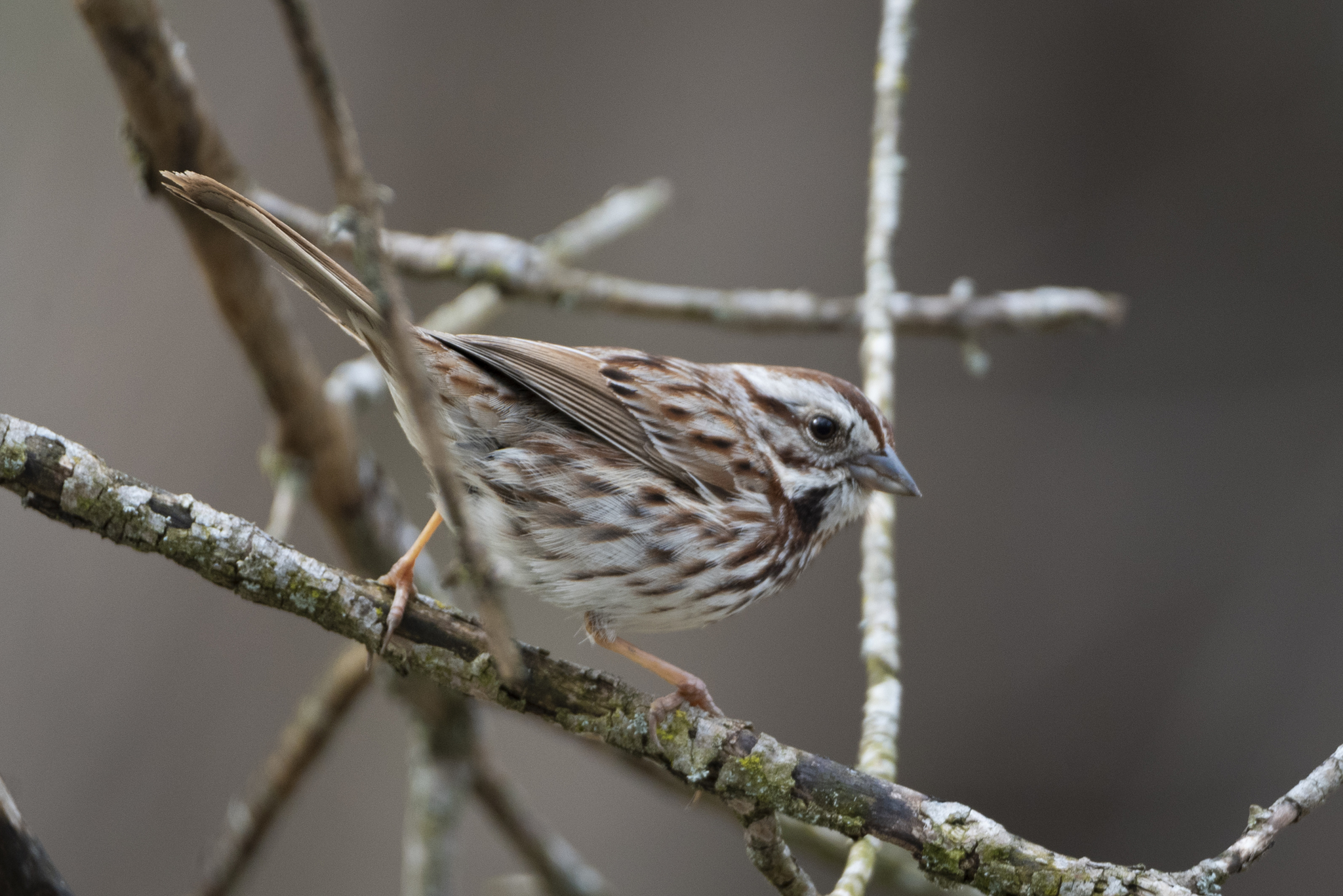
May 6, 2022, Toronto County, Ontario, Canada
Photo © Tatiana Svidskaia, some rights reserved (CC-BY-NC)
iNaturalist observation
About the song sparrow
- Common in Minnesota, this medium-sized sparrow can be identified by the russet stripes on the crown and bold streaking on the breast.
- Song sparrows occupy a wide variety of habitats, including marshes, prairie, open woodland and forest edges.
- In summer, song sparrows eat mostly insects and seeds. In winter, they rely more heavily on seeds. They forage on the ground and in shrubs, and will visit bird feeders if nearby cover is adequate.
- Fun fact: The appearance of song sparrows varies considerably across North America. In some areas, they are darker in color with bolder streaking, while in other areas they have more subtle coloration.
- Song sparrows migrate. Expand the "Migration animation" section below to learn more.
Migration animation
Migration animation
Click the full-frame icon (lower right corner of video) to play at full size.
More about eBird's abundance animations
eBird data from 2006-2020. Estimated for 2020. Fink, D., T. Auer, A. Johnston, M. Strimas-Mackey, O. Robinson, S. Ligocki, W. Hochachka, L. Jaromczyk, C. Wood, I. Davies, M. Iliff, L. Seitz. 2021. eBird Status and Trends, Data Version: 2020; Released: 2021. Cornell Lab of Ornithology, Ithaca, New York. https://doi.org/10.2173/ebirdst.2020
Visual guide to phenology
Watch for changes in song sparrows' presence (or absence), abundance, and behaviors at different times of year. Also, pay attention to when young-of-year appear and develop.
Note to observers
This page explains general clues to watch and listen for when observing song sparrow phenology. However, this page does not explain how to identify this bird or collect data in a standardized way.
- For help with identification, see The Cornell Lab's All About Birds.
- For guidance on collecting data, see Nature’s Notebook.
Audio resources
Visit All About Birds for recordings of songs and calls by song sparrows.
Graphs and historical data
Note: The Orientation Center provides a map, as well as information on reading graphs; interpreting summary statistics, who collected the data and how; and how to download datasets for independent exploration.
Arrival
- Earliest: February 28 (occurred in 2000)
- Average: March 29
- Latest: April 19 (occurred in 1998)
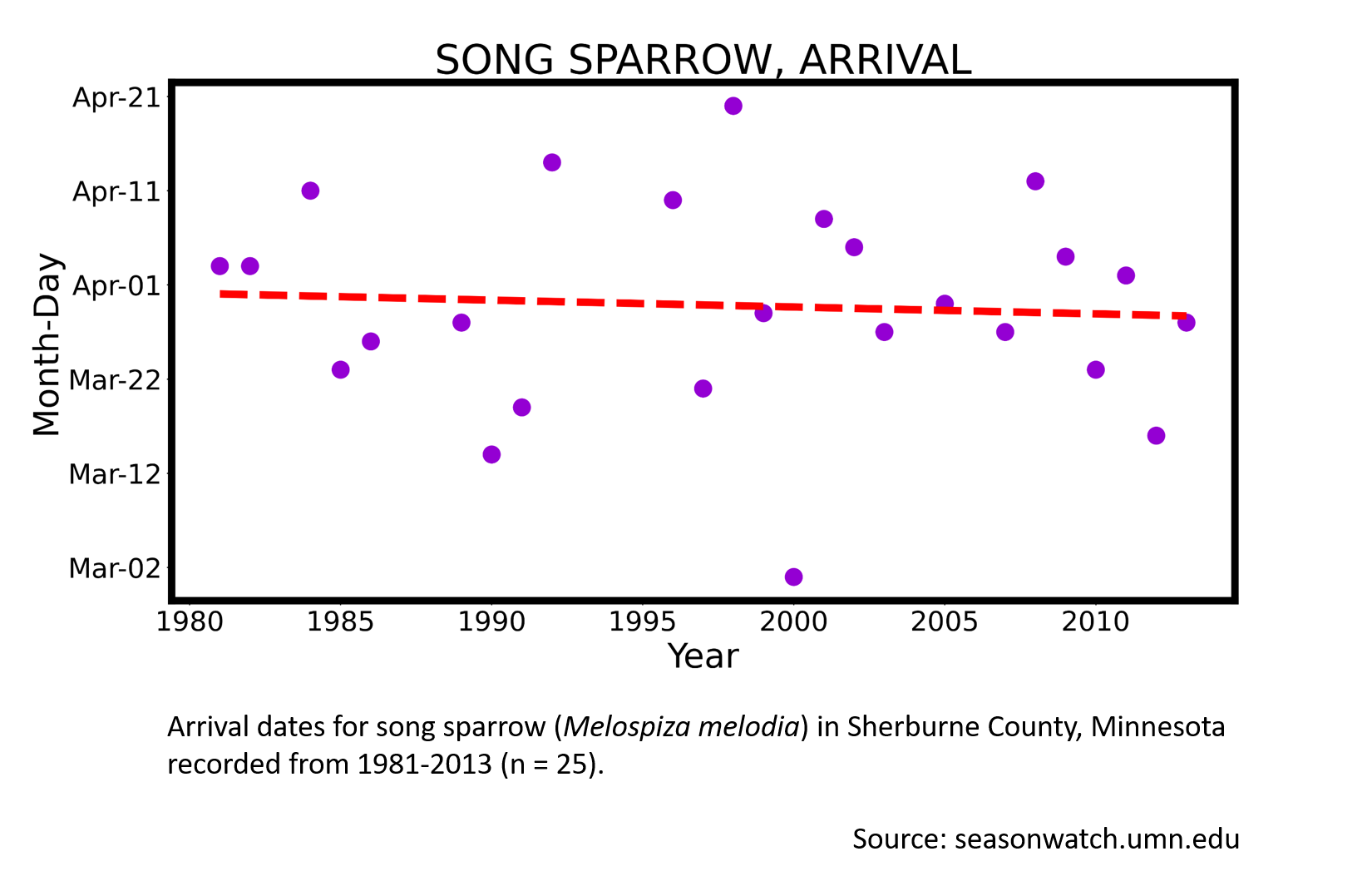
More resources
Keep exploring Season Watch
Keep exploring Season Watch
Co-author: Audrey Negro, Minnesota Master Naturalist
